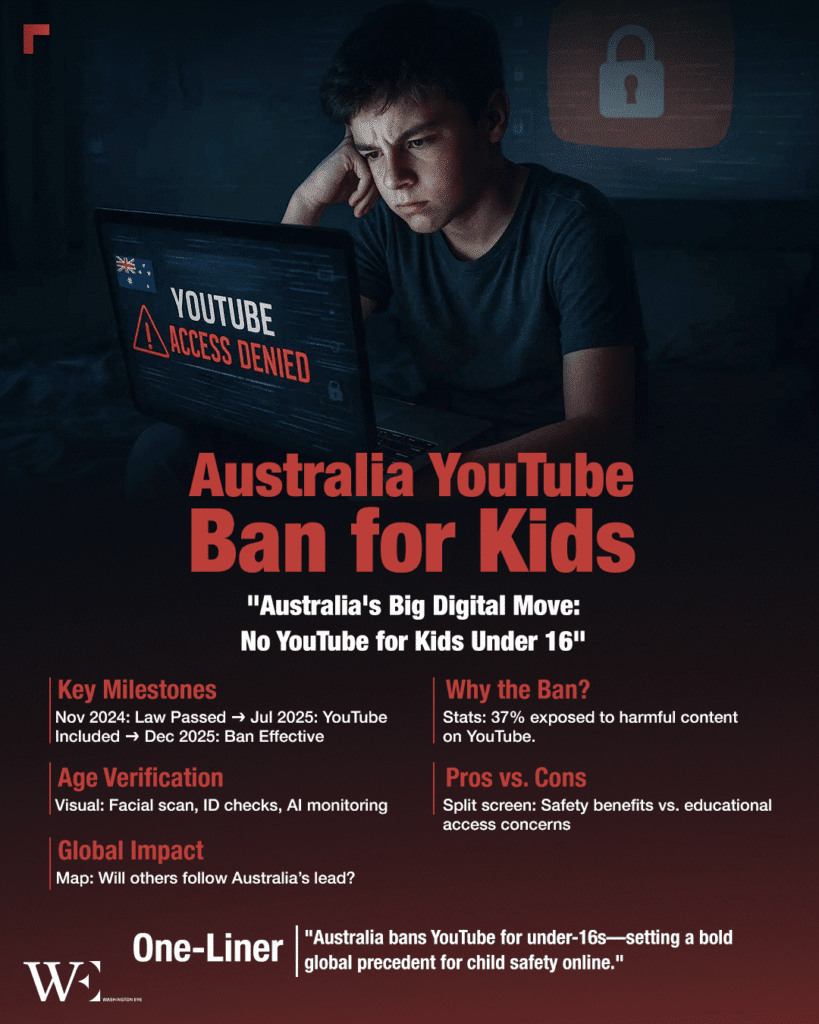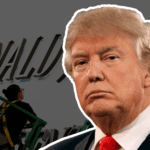In a landmark move to protect children online, Australia has officially extended its sweeping social media age restrictions to include YouTube, banning account access for anyone under the age of 16. The decision, announced in late July 2025, comes amid growing public concern over the impact of digital platforms on youth mental health, safety, and development. This policy shift follows mounting evidence that YouTube, despite being a popular educational resource, also exposes children to harmful content through algorithm-driven recommendations. From December 10, 2025, platforms like YouTube must take “reasonable steps” to prevent underage users from creating or maintaining accounts. This may include disabling existing accounts and verifying user age through various means, such as facial scans, government ID checks, or behavior-based detection.
The move marks a reversal from Australia’s earlier stance, when the Online Safety Amendment Act passed in November 2024 initially excluded YouTube from its restrictions due to its perceived educational value. However, recent reports from the eSafety Commission highlighted alarming data: 37% of children aged 10 to 15 reported encountering harmful content on YouTube, more than any other social media platform. In response, the Australian government swiftly acted to include the platform under its regulatory framework. Prime Minister Anthony Albanese voiced strong support for the expansion, stating that social media is doing “social harm” to young Australians and promising that the government would always “have the backs of parents.” Communications Minister Anika Wells echoed this sentiment, emphasizing that platform pressure or legal threats would not deter the government from prioritizing child safety.
Reactions to the ban have been divided. Many parents, educators, and mental health advocates support the decision, believing it will limit children’s exposure to disturbing content, online predators, and addictive screen time. The Australian Primary Principals Association welcomed the change, describing it as a vital step to reclaim children’s attention for healthier developmental activities. However, critics argue that the policy is overly blunt and may have unintended consequences. Some digital rights groups warn it could push children to use more dangerous workarounds such as VPNs, while others highlight the ban’s potential to deprive children of valuable educational content. A number of students and tech experts also expressed concerns, noting that watching YouTube videos without being logged in will limit interactive features such as playlists, subscriptions, and comments, reducing the platform’s educational functionality.
The ban mandates that platforms must implement robust age-assurance measures. These will likely include biometric tools such as facial age estimation and ID verification, but could also involve less intrusive methods like AI-based behavioral detection or third-party verification partnerships. While YouTube Kids may remain accessible under a strict educational exemption, its status will depend on further assessment by the eSafety Commissioner. The government clarified that exemptions will still apply to apps primarily focused on health, education, or communication meaning not every platform used by children will be subject to the same restrictions.
This bold move places Australia at the forefront of global digital regulation, setting a precedent that other countries are closely watching. While the initiative is driven by a genuine desire to protect young users, its success will depend heavily on how well platforms enforce the rules and how effectively families adapt to them. The ban raises essential questions about online freedoms, educational equity, and the balance between safety and autonomy in the digital age. As December approaches, educators, parents, and tech companies alike are bracing for the significant shift that lies ahead.
















